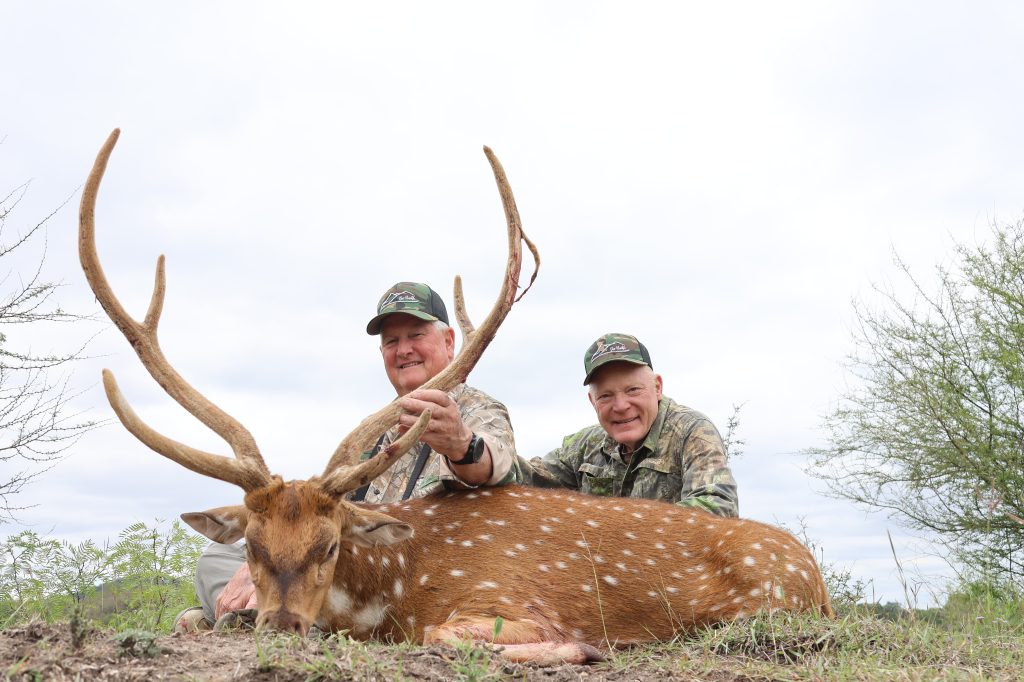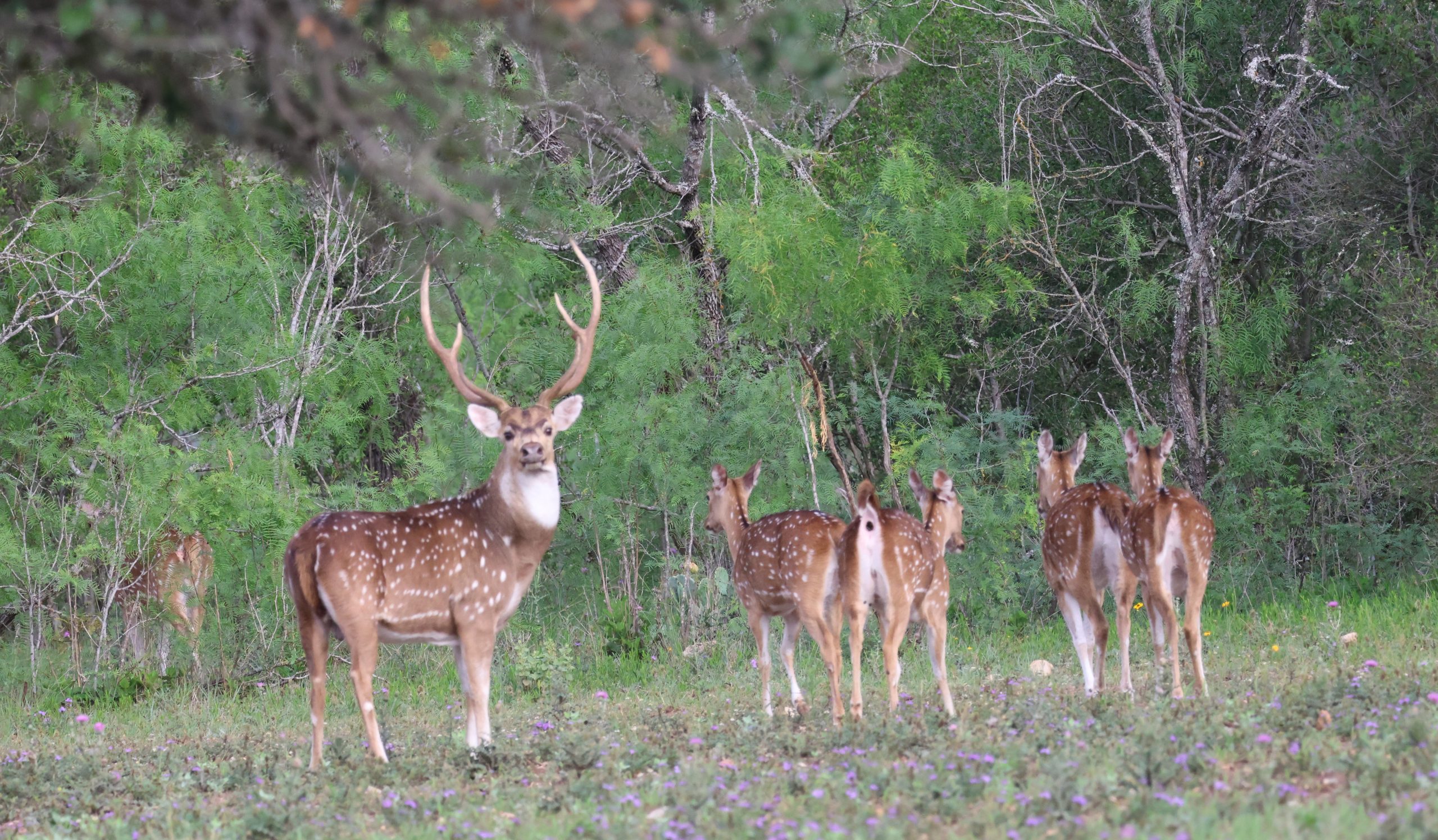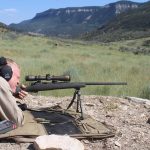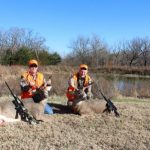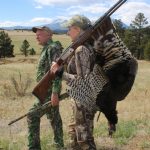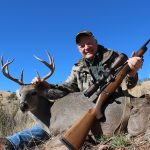Hunting the most beautiful, and possibly the most delicious, deer in the world.
It’s often said the axis deer is the world’s most beautiful deer, reddish-gold, bright white spots, and three-tined antlers that grow tall, wide, thick, and gorgeous. It’s May, so across North America, our native deer are just starting to grow their antlers. Among the species, and by area, the antler growth cycle varies, as does the time when they drop their antlers. My Kansas whitetails are just showing little nubbins; like all American deer, we’ll hunt them in autumn and winter, in hard antler.
Although he’s been here a long time, the axis deer is not a native American deer. He hails from the steamy jungles of the Indian subcontinent, a tropical deer, with a different schedule. As such, and in common with many tropical deer (including our own brocket deer), that schedule isn’t as rigid as with our whitetails and mule deer. Some axis bucks can be found in hard antler in any month of the year.
Luck is always a factor. The biggest axis buck I’ve ever seen showed up at a whitetail stand on the Edwards Plateau in early December, a low-fence area that had a few free-ranging axis deer. Including this giant, at totally the wrong time of year. Could easily have shot him, but I was hunting whitetail…and I had no idea what the landowner might charge me. In my world, always an important detail. Luck aside, hunting is always a matter of trying to be in the right place at the right time, working the numbers game. The majority of axis bucks will finish growing their antlers in late March or early April and rub off their velvet in May.
The primary rut is June and July. Although the axis deer is largely diurnal, much rutting takes place at night, perhaps because of daytime heat. The axis is a vocal deer, sounding off with bellows and alarm barks. In a Texas camp during the rut, much of their calling is heard at night, with prime hunting time early morning and late afternoon.
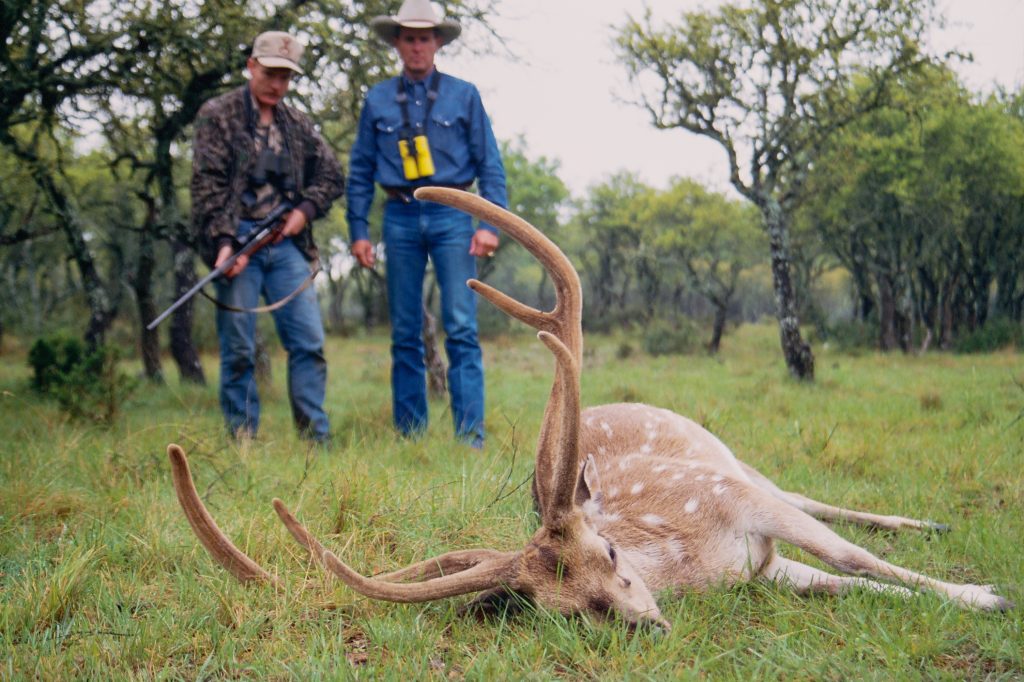
Several myths surround the axis deer. It is not the only deer that retains spots throughout its life. Some fallow deer and various other Asian deer are also spotted, although I don’t believe any other deer wears a blanket of spots as bright as the axis. Its common local name of chital comes from the Sanskrit word for “spotted;” the cheetah has the same derivative. Although imposing and tall (especially with exceptional antlers), the axis deer is a medium-sized buck, larger than Texas whitetails and desert mule deer, but smaller than northern deer of either species. A big axis buck will weigh over 200 pounds, but even with the best groceries is unlikely to exceed 250.
Chital/axis deer were first introduced into Texas in 1932 and today it has far the largest population and the greatest hunting opportunity. A fixture on most Texas hunting ranches, they occur in breeding, free-roaming populations in fully 27 Texas counties; a brother-in-law in suburban Austin has them all over his yard every night, almost a nuisance. They have been in Hawaii much longer, since the 1860s, initially on Molokai, but also now found and hunted on Lanai and Maui. Croatia has a small population on several islands, and Australia has a stable, but isolated free-range herd in Queensland, spilling over into New South Wales. More recently, they have been widely introduced into Argentina, both on estates and in significant free-range populations. I saw lots of axis deer in southern Buenos Aires province, and the last axis deer I shot was in Entre de Rios province, a little-known free-range population.
With all legal hunting long closed in India, the native-range situation is uncertain. They are certainly present across much original range, and definitely not threatened. Just the other day, old Marine buddy Mike Satran joined me in Texas to hunt an axis deer. Around the fire the first night, I mentioned I’d taken one “native range, free range” in Pakistan. Mike jumped on that instantly: “I thought they were from India?”
Pakistan was part of India until Partition in 1948. Most of Pakistan is too high, dry—or both—for axis deer. They occurred in the well-watered Indus River valley and, today, with no legal hunting in India, they seem to be working north and re-establishing. I took mine there, a nice buck, with little difficulty… literally just a fence-line from India. Actual original range included not only most of India and extreme southern Pakistan, but also Bangladesh, Sri Lanka, and into the lower forests of Bhutan and Nepal.
Not a myth, but not universal, is the axiom that axis deer produce the world’s finest venison. This is generally true: it’s mild, sweet, and tender, never gamey. Time of year doesn’t matter; axis venison is the best of the best. Usually. On a cattle station in Australia’s Queensland, Bruce Keller, Donna, and I were in a rough camp, not much food (or much else). I made a sacrifice play and shot the first buck, a weird non-typical, mostly so we could have some camp meat. Our Aussie host assured us: “Mates, that ain’t fit for a dog.”
We knew better; Bruce has axis on his Texas ranch, and I’ve enjoyed axis steaks many times. It’s as good as it gets. So, we peeled out the tenderloins, marinated them, cooked them right. Looked good, smelled good. Flavor was fine but, mates, you couldn’t cut those filets with a chainsaw. I can only attribute this to the various eucalyptus, which was about all these axis deer had to eat.
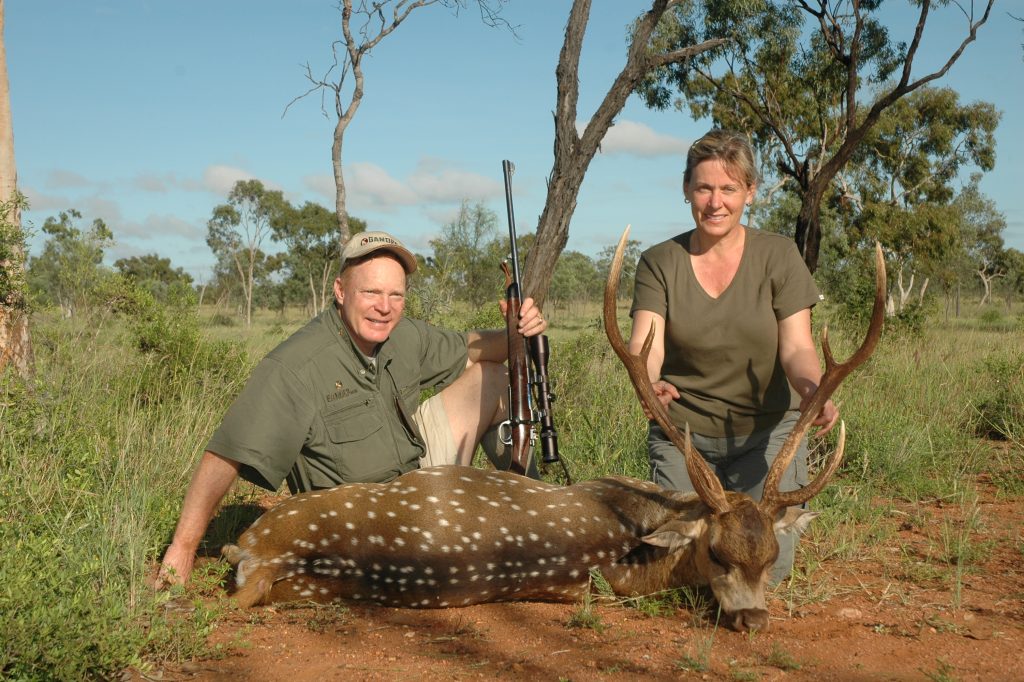
We still laugh about it, and axis deer is still the No. 1 venison in my book. Also, although it was fun to hunt them native range/free range in Pakistan, and it’s also fun to hunt them in strange places like Australia and Hawaii, Texas is far and away the best place to hunt axis deer. Biggest numbers, best genetics, most opportunity.
What You’re Looking For: The problem with axis deer is there isn’t much to look at. Like many Asian deer (including sika, sambar, and hog deer), the axis deer is typical with a basic three-point antler; anything more is uncommon and nontypical. The axis deer has a brow tine projecting forward just above the pedicel; second or caudal point, forward or inward, about two-thirds up the main beam; and the main beam itself. This last, far the largest and most visible, is the way we judge our axis deer, by length of main beam. A beam of 28 inches is good, but the real goal is a 30-inch main beam. They get bigger, sure do, to three feet and slightly beyond, but you must take into account the presence and size of the brows and caudals…and the shape. What I love best—and what can’t always be found—is a buck with heavy main beams that start curving outward, then rise and turn inward with a “beer-barrel” shape. Length is always in the curve, so these are the axis bucks that are most likely yield the greatest length.
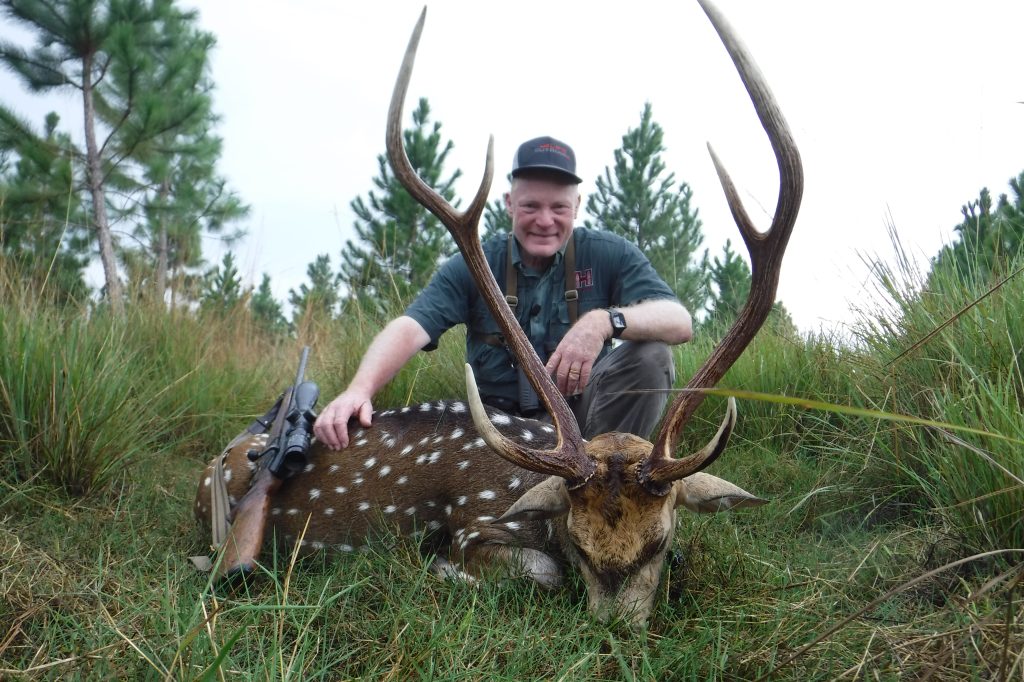
In recent years I’ve spent a lot of spring and early summertime in Texas, helping daughter Brittany with her She Hunts skills camps. Attendees don’t have to hunt but, because of the opportunity (and a bit of peer pressure), most do. Opportunity and time of year are ideal, so I’ve done a lot more axis deer hunting with Brittany’s ladies than I ever did for myself. She does her camps on Record Buck Ranch, which is famous for big axis, plentiful with great genetics.
Even so, it’s far from a sure thing. Like all deer, axis deer are wary and switched-on. Two more factors: In the thick, shadowed cover they love, those spots are the most amazing natural camouflage. Hard to see, hard to pick out the buck. Then, you have to pick out the right buck. In this area, axis bucks tend to run in bachelor groups, greatly complicating the issue. With axis deer, we aren’t counting points (past three). Mature bucks all look big, so it’s a matter of nuances: Shape, width, tips, make sure he’s got all three points on both sides. Difficult…and they don’t stand and look at you for long. Success is high, but it’s not a 100 percent deal. Like everything else in hunting, also depends on how picky you are. At Brittany’s March 2023 camp, Houston realtor Kelli Odum wanted a big axis. She was hunting hard and, as happens, was struggling to get a shot. I had to leave that camp early and I’d just gotten on the road when she came in with a giant, perfect buck, taken with a perfect shot.
A month later, just after the April camp, Marine buddy of fifty years Mike Satran came in, hoping for a big axis as a bucket list item. I was hopeful; timing was even better, rut not on, but bucks rapidly coming out of velvet. Honest, I figured we’d get him one…but I reckoned it would take a few days.
Mike hunted with Record Buck manager Shaun Catton, a great hunter, originally from Zimbabwe. We stared at midday, knowing nothing can happen for hours, but anxious to get started. Like all hunting, you just never know. Minutes into the hunt, not far from ranch headquarters, we ran into three bucks tucked under a shady oak. Lord, all three were shooters, take your pick…except one had the width, the shape, the length, the mass, the points…everything. First minute or last, this one was too good to pass. Using his pet M48 Nosler .300, my buddy got his bucket list axis and headed back to Oregon with the world’s best venison. The only sad thing: He really didn’t get a chance to hunt axis deer. And that’s a lot of fun on a late-spring day.
